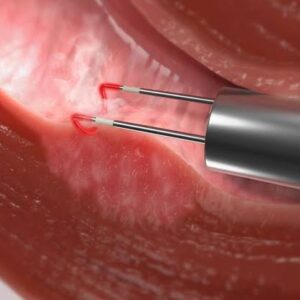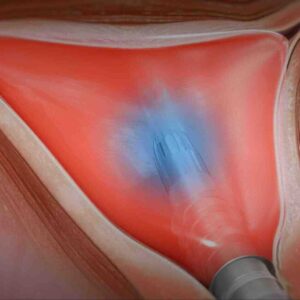Hysteroscopic Endometrial Ablation
Price range: ₹800.00 through ₹1,600.00
Learn Hysteroscopic Endometrial Ablation through our scientifically proven stepwise program. You can acquire this skill anywhere, anytime, without quitting your job and daily life.
Please read the Requirements and Commitments of each level before making a purchase. Ensure you meet the eligibility criteria to receive the product/service.
Description
Hysteroscopic endometrial ablation is a minimally invasive surgical procedure performed to treat heavy menstrual bleeding (menorrhagia) by removing or destroying the endometrial lining of the uterus. This procedure is conducted using a hysteroscope, a thin, lighted tube that is inserted through the vagina and cervix to access the uterine cavity. Here are the steps, indications, and a brief note on why gynecological surgeons should possess this surgical skill:
Steps:
- Anesthesia: The patient is usually given general anesthesia, but in some cases, local anesthesia or conscious sedation may be used.
- Cervical Dilatation (if needed): If the cervix is not already open, it may be dilated to allow the passage of the hysteroscope.
- Hysteroscope Insertion: The hysteroscope is inserted through the cervix and into the uterine cavity, providing a clear view of the endometrial lining.
- Visual Inspection: The surgeon inspects the uterine cavity and endometrial lining using the hysteroscope.
- Ablation: Various techniques can be used to ablate (remove or destroy) the endometrial lining, such as thermal ablation (using heat), radiofrequency ablation, or freezing (cryoablation).
- Confirmation: The surgeon confirms that the endometrial lining has been adequately ablated and that no bleeding or irregularities remain.
- Removal of Instruments: The hysteroscope and any other instruments used are removed.
- Closure and Recovery: The patient is monitored in the recovery area, and she can usually go home the same day.
Indications:
Hysteroscopic endometrial ablation is indicated for women who experience heavy menstrual bleeding (menorrhagia) that significantly affects their quality of life and does not respond to other conservative treatments. Common indications include:
- Menorrhagia: Heavy menstrual bleeding that leads to anemia, disruption of daily activities, or reduced quality of life.
- Failed Medical Management: When medical treatments like hormonal therapy or medications do not effectively control menorrhagia or are not well-tolerated.
- Desire for Minimally Invasive Treatment: Women who prefer a minimally invasive procedure to treat heavy menstrual bleeding without undergoing a hysterectomy.
Gynecological surgeons should be skilled in hysteroscopic endometrial ablation because it offers a minimally invasive and effective solution for women suffering from heavy menstrual bleeding. This procedure is an important alternative to hysterectomy (removal of the uterus) for patients who wish to retain their uterus. It significantly improves the quality of life for women with menorrhagia, provides a quicker recovery, and reduces the need for ongoing medical management. Possessing this skill allows gynecological surgeons to offer personalized, patient-centered care while preserving reproductive options for women seeking treatment for heavy menstrual bleeding.
Additional information
| Levels | Level-1, Level-2, Level-3 |
|---|
General Inquiries
There are no inquiries yet.






